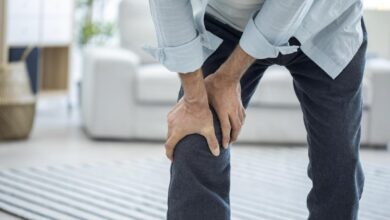
Post-Workout Pain: muscle regeneration with Quality Legal Roids
We already wrote about the causes of post-workout pain, that is, pain that appears the day after a workout or a day later, in the article “Microtrauma. Are they a major factor in muscle growth? ” and talked about in the videos of our science and Legal Steroids at this site. However, readers have questions about this topic. The main question is: “If post-training pain in beginners arises from ruptures of shortened and“ wrong ”myofibrils, then how to explain the presence of this pain in experienced athletes? After all, according to your arguments, during regular training, myofibrils are aligned in length, and there is no reason for their breaks. ” The question is very good, and at first glance casts doubt on this theory. But only at first glance….
Let’s start in order.
Firstly, we will immediately repeat, for those who have not read our previous articles, that the presence of lactic acid in the muscle has nothing to do with post-workout pain, because it completely leaves the muscle an hour after the load.
Post-workout pain can only be associated with inflammation, which occurs when muscle structures are damaged.
We wrote a lot about the fact that the theory of the destruction of CF as a factor in muscle growth did not find scientific confirmation. A specific study was mentioned that the presence of injuries in the muscles during training did not affect growth. The studied groups with minimal damage (which was measured by detecting the level of creatine kinase, as well as subjective sensations – the presence of post-training pain) showed similar indicators of growth in strength and muscle mass, as well as a similar increase in the level of growth factor IGF-1Ea and mRNA. Nevertheless, the athlete is very strongly driven into the head by the myth imposed for decades about the need for muscle damage in training.
What damage can occur in a muscle?
The most popular answer is the violation of the integrity of the myosin bridges when they break with the actin filament during mechanical disconnection, that is, without the participation of ATP energy in this process. This idea was first expressed by Vadim Protasenko in the book “Think or super training without errors.” And although later the author himself revised his point of view on this issue, the myth turned out to be extremely tenacious. Modern scientific research and practical sports experience deny the fact of violation (damage) of the integrity of the actin-myosin bridges during mechanical disconnection, since the structural strength of the myosin bridge exceeds the strength of its adhesion to the actin filament.
Evidence of this are experiments with the determination of energy consumption when climbing stairs and descents. When going up, the efficiency is 20–23%, and when going down, metabolic costs practically disappear, costs remain only at the level of rest – the main metabolism. Therefore, with the same mechanical power, the efficiency on the descent exceeds 100%. This means that when performing eccentric exercises (stretching the muscles of the extensors of the lower leg), mechanical energy is spent on breaking the actin-myosin bridges, and the chemical energy of ATP molecules is not wasted. Moreover, properly trained muscle after such exercises does not hurt, therefore, damage to the muscle fibers does not occur.
Microtrauma does not occur with damage, but with a complete rupture of myofibrils. Myofibrils in the muscle cell grow and are constantly updated. These are the thinnest threads. Let me remind you that the diameter of a muscle cell (fiber) is several hundredths of a millimeter, and in each such cell there are up to 2,000 myofibrils. So, when updating, new myofibrils in the cell without regular loading grow in high-threshold GMV, anyhow. They can be different in length and located in relation to each other at certain angles. In OMV this does not happen because they are regularly involved in everyday life and therefore, being updated, they are formed corresponding to the length of other MV myofibrils and located parallel to them.
Therefore, when a beginner comes to training and does strength exercises, the short and incorrectly fused BMW myofibrils, which he almost never used, resist stretching and tear accordingly.
With the breakdown of myofibrils, protein molecules, radicals are formed, i.e. charges. Water is attached to these charges. Therefore, bound water appears in the MB and a lack of free water is formed. Water enters the CF, which increases the cell volume, the membranes are stretched, and there the pain receptors give a signal to the brain about pain. This explains the post-traumatic pain. With regular training in BMW myofibrils, natural selection occurs.
New, myofibrils under construction die if they break during stretching or eccentrics, and long myofibrils survive. Therefore, myofibrils are aligned in length and are parallel to each other. After this, post-workout pain cannot occur because nothing is torn. It is the alignment of myofibrils in the cell that causes the disappearance of pain after training.
What can it still be caused by regularly training athletes?
There are three reasons.
First reason.
As I explained, post-workout pain occurs due to the rupture of shortened myofibrils in the BMW. With regular training, all myofibrils are leveled and not damaged. Post-workout pain goes away, but it does not go away in more than one workout. Muscles in beginners hurt not only the first day. It is necessary to do several workouts, recruiting this CF in order to break all the irregular myofibrils. Usually at least three.
Post-workout pain completely disappears if the weight of the load does not change. But, if there is progress, and the weight of the projectile from training to training increases, then the athlete has to recruit higher threshold motor units. No wonder athletes are able to recruit about 90% of DE, while the average person is 75-80%. At first, after increasing the working weight in the approach, the new DEs turned on only in the last 1-2 repetitions and the short myofibrils partially broke. At the next training session with a large weight, they will turn on for 2-3 repetitions and another part will break. Etc.
With further progress, another 1-2 new DEs will be connected. We remember that the higher the level of excitability of DE, the more MV is in it. And immediately activate a large number of high-threshold GMV is simply not necessary. Therefore, when the weight of the weight increases from training to training, slight pain after each training is possible, and when the weight from training to training does not increase, muscle pain is not observed. Except for two cases, which will be discussed later.
The second reason.
The second reason is overtraining caused by excessive muscle acidification. We know that the presence of hydrogen ions is one of the main factors of muscle growth. You can read more about this in the article “Viktor Seluyanov. Muscle growth factors ”in the previous issue of the magazine. When there are too many hydrogen ions, they begin to destroy the contractile structures of the muscles.
Moreover, not only newly formed protein molecules and their fragments, these primarily, but also the main working integral mitochondria. This old, Soviet-era principle, that you need to return from a training session to those killed, and if you still have the strength, then the training went in vain, destroying more than one generation of athletes. Recovery time after such workouts can take several weeks. And this is only until reaching the initial level. We are not talking about progress here at all. I am talking about in-kind training.
With such training, post-workout pain can be without weight gain. But here is something from masochism. To kill yourself and your muscles, reducing your performance and strength only to achieve a feeling of full expression in training …. Such training should beware, as well as trainers cultivating such a methodology of moral-volitional training. Otherwise, you can completely forget about any progress.
The third reason.
A third cause may be mechanical damage to myofibrils. This, for example, is observed among marathon runners at the end of the race. In the pictures taken by Hagerman and other physiologists, it is seen that not only myofibrils but also the MVs themselves are damaged. The sarcolemma in the images was completely destroyed, as a result of which the contents of the cell freely moved between other intact fibers. This comes solely from the shock loads experienced in running, which is why I and the opponent of long running for health.
The fact that this destruction is not a consequence of damage by hydrogen ions (reason No. 2) is proved by the fact that cyclists who can pedal up to 10 hours a day at the same power have never seen such damage. And for marathon runners – always. Naturally, after such trainings, marathon runners experience pain in the calf muscles and rarely run a competitive distance in training. Similar injuries occur from prolonged shock. Running, jumping, hitting anything, etc.
Here are three reasons why a trained athlete may experience pain after training. Today, science does not know other reasons.



